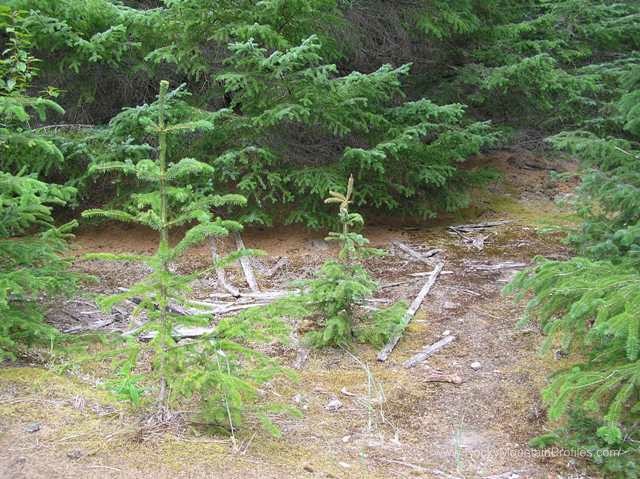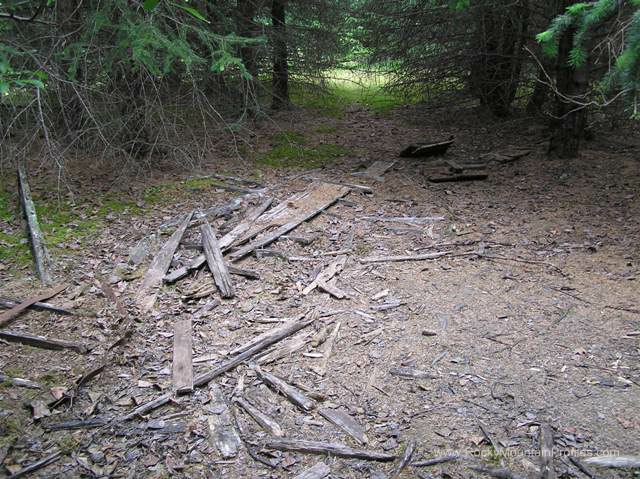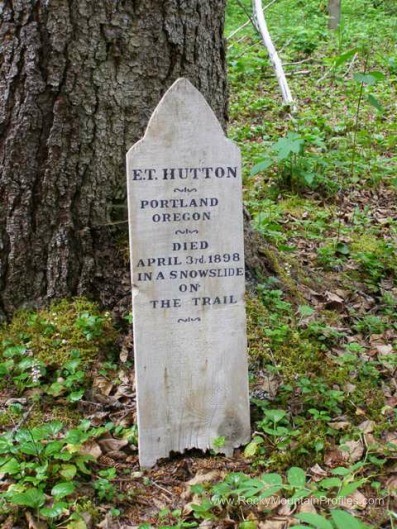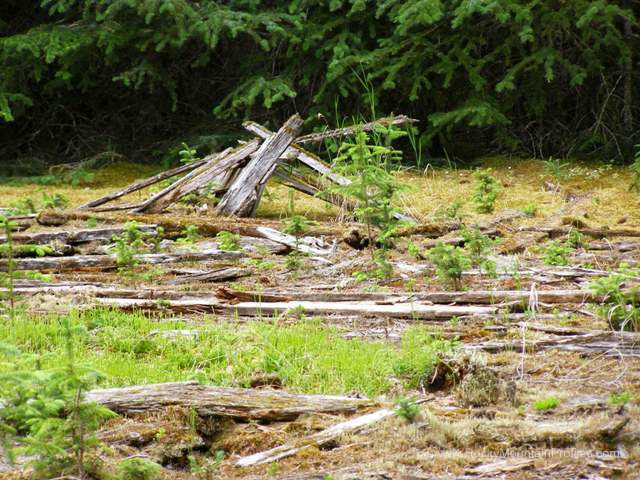Photos courtesy of Mike and Joan Sinnwell June 2010
Dyea Alaska Ghost town
As a tribute to my Mail carrier father I have included this story about Mr. and Mrs. Rowley of Dyea. Dad would appreciate this one.
When mail had to travel by dog sled, weight is critical. Carriers would only bring first-class mail, but newspapers, magazines and packages were left behind. Sometimes correspondents slid newspaper clippings and gifts into letters, but if the package was too thick, suspicious carriers would leave it behind for the spring steamboats. Winter mail was precious to the lonesome populations in the far north and they were quick to shower their wrath on carriers or postmasters who moved too slowly.
After they lost their goods when their ship was swamped on the way to Dyea, Mr. and Mrs. Rowley went to work packing freight to raise enough money to keep going. When Mrs. Rowley received a letter from her brother who referenced $100 that he had sent and which she had not received, she went through the roof with rage. Typical of the strong women of the time she grabbed a pistol and set out to shoot the postmaster at Dyea. Her claim was that the postmaster had stolen her money. Glad it wasn’t my dad. All she accomplished was to be arrested for attempted murder.
Lost to Skagway – Dyea went from boom to bust in a few short years. At one time it was the home of Tlingits Indians. For thousands of years they traveled the trails and passes in the area and one of those pass would become famous as the Chilkoot Pass.
The Tlingits traded with the people of the interior, and also acted as middlemen in trading between the Russians and the interior. Their passes were off-limits for non-Tlingits until 1879, when US Navy Commander L.A. Beardsley was able to reach an agreement with the Tlingits allowing white people access to the passes. This agreement proved significant when the Klondike Gold Rush started in 1897.
Dyea’s harbor has a shallow harbor which meant that most of the ships landed their cargoes at Skagway. The Stampeders had purchased tickets to Dyea but were often left to make their own way over to Dyea and then the Chilkoot Pass trail.
The lack of good docking facilities at Dyea meant the ships unloaded cargo onto the beach. The tides forced people to scramble to get all their goods to high ground before high tide. If you had the funds you could hire men to help cart crates and boxes off the beach. Low tide cost $20 per hour but high tide demanded $50 per hour.
May 1898 is when Dyea reached its zenith. At that time the town had a population estimated at 8,000 people, 48 hotels, 47 restaurants, 39 saloons and 19 freighting companies. Competition between Dyea and neighboring Skagway had been intense, but a single project turned the tide in Skagway’s favor and led to the abandonment of Dyea. That event was the construction of the White Pass & Yukon Route railway. In addition the avalanche on April 3, 1898 did not help. The avalance struck along the Chilkoot Pass trail and took the lives of over 60 stampeders. They had been warned not to take the trail but the promise of gold was too great for many to resist. Dyea town promoters feared that their counterparts in Skagway would use the tragedy to tout the White Pass as the safer trail. It did not help when in 1899 a forest fire destroyed the Army post near Dyea. The troops, most of them black Spanish American War vets, move to Skagway. Some buildings were shipped over from declining Dyea to Skagway.
Although an aerial tramways had been built across the worst part of the Chilkoot Pass the race between the two towns was almost over. The Chilkoot Pass trail may have been easier or better than the White Pass trail, but it could not compete with the railroad. The town faded away quickly. The post office closed down in 1902. By 1906, a man named E.A. Klatt was the town’s only resident. He abandoned the town after tearing down and burning many of the buildings.
Dyea’s status as an American town was very much in dispute during its heyday. In February 1898, the North West Mounted Police set up machine guns at the summits of both the Chilkoot and White Passes to enforce Canada’s claim to the region at least that far south. The wording of the 1825 treaty between Russian and the British territory that set the boundary was not clear. The issue was finally settled in 1903.
In July of 1953 the Taiya River washed away the home of Dyea homesteader Bill Matthews and other cabins are lost along West Creek.
In 1978 the Taiya River threatened the old Native cemetery in Dyea. This started the controversial removal of remains by National Park Service to an area near the Slide Cemetery.
When my wife and I visited in 2010 little remained. Another town taken by the ages. Standing on the tidal flats you could only use your imagination to picture what it must have been like in Dyea during the Klondike Gold Rush.































